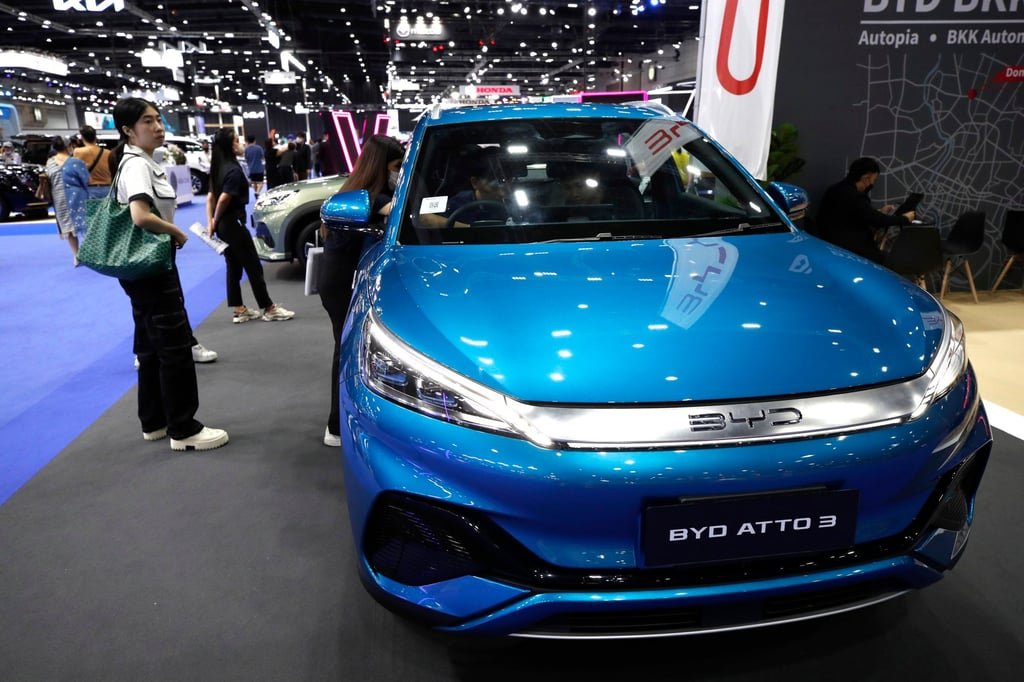The global battery manufacturing sector is undergoing a seismic shift as companies recalibrate their strategies in response to a decelerating electric vehicle (EV) market. With EV sales growth plateauing in key markets like the U.S. and Europe, industry leaders such as LG Energy Solution, Tesla, and BYD are pivoting toward energy storage systems (ESS) to unlock new revenue streams and optimize capital efficiency. This strategic reallocation of resources is not merely a short-term adjustment but a transformative response to the evolving electrification landscape, where ESS is emerging as a critical pillar of grid resilience, renewable integration, and long-term profitability.

The EV Slowdown: A Catalyst for ESS Innovation
The EV market, once the primary driver of battery demand, is facing headwinds from economic uncertainty, supply chain bottlenecks, and shifting consumer preferences. In the U.S., EV sales growth slowed to 2% in 2024, down from double-digit rates in 2022. Meanwhile, Chinese automakers are grappling with overcapacity and price wars. This has forced battery manufacturers to reevaluate their capital expenditures and operational models.
For example, LG Energy Solution—a global leader in lithium-ion batteries—has repurposed a $1.4 billion Michigan plant originally designed for EV batteries into its first U.S. facility for stationary energy storage. This move accelerated the company’s entry into the ESS market by a year, enabling it to capture a $34 billion growth opportunity projected for 2025 alone. By reallocating underutilized production capacity and labor, LG is reducing capital expenditures by up to 30% while aligning with surging demand from utilities and data centers.
Tesla’s energy storage segment offers a compelling case study. In 2024, revenue from ESS and solar products grew 67% year-over-year to $4 billion, effectively offsetting a $6 billion decline in EV sales. The company’s Megapack units, designed for grid-scale storage, secured contracts with utility providers and Elon Musk’s xAI, which alone purchased $191 million in systems. Tesla’s pivot underscores how ESS can provide stable, high-margin revenue in an era of EV market volatility.
Strategic Reallocation: Capital Efficiency in Action
The ESS sector’s rapid growth is driven by three key factors:
1. Grid Modernization: Renewed electricity demand in the U.S. after 15 years of stagnation is creating a $41.8 billion market by 2032. ESS systems stabilize grids, manage peak demand, and provide backup power for data centers and industrial facilities.
2. Renewable Integration: As solar and wind energy adoption surges, ESS becomes essential for balancing intermittent generation. The U.S. Energy Information Administration (EIA) projects battery capacity to double by 2026, driven by the Inflation Reduction Act (IRA) and state-level mandates.
3. Cost Optimization: Repurposing existing EV battery infrastructure for ESS reduces capital intensity. For instance, Redwood Materials is collaborating with General Motors to repurpose used EV batteries into large-scale storage systems, minimizing waste and capital outlay.
LG Energy’s CFO, Chang Sil Lee, emphasized the urgency of this pivot: “We must maximize existing sites and reduce capital spending to align with expected 10% declines in U.S. EV demand.” This approach reflects a broader industry trend of prioritizing capital efficiency through asset reuse and modular ESS designs.
Investment Opportunities in the ESS Ecosystem
The ESS market’s projected CAGR of 25.2% through 2032 presents compelling opportunities for investors, particularly in companies demonstrating agility in resource reallocation. Key players to watch include:
– LG Energy Solution: With its U.S. ESS facility and partnerships with Excelsior Energy Capital, the company is positioned to dominate North American grid-scale storage.
– BYD: The Chinese automaker’s Blade Battery, designed for both EVs and ESS, leverages its vertical integration to scale production at lower costs.
– Samsung SDI: The firm’s next-generation solid-state batteries for ESS and UPS applications could redefine energy density and safety standards.
Emerging markets like India and China also offer high-growth potential. Tata Power’s 1,800 MW pumped hydro storage project and India’s Mission LiFE initiative are accelerating ESS adoption in regions with underdeveloped grid infrastructure.
Risks and Considerations
While the ESS sector is thriving, investors must remain cautious. Trade tensions, such as U.S. tariffs on Chinese battery components, could disrupt supply chains. Additionally, the high upfront costs of ESS projects and uncertain revenue models in developing markets pose risks. However, government incentives like the IRA’s 30% tax credits for residential ESS and the EU’s Green Deal are mitigating these challenges.
The Future of Energy Storage: A Cornerstone of Electrification
As the world transitions to a cleaner, more electrified energy system, ESS is evolving from a niche market to a foundational infrastructure asset. For battery manufacturers, the strategic reallocation of resources toward ESS is not only a response to EV market slowdowns but a proactive step toward securing long-term profitability. Investors who align with this shift—by supporting companies that optimize capital efficiency and innovate in grid-scale storage—stand to benefit from a sector poised to reach $5.12 trillion by 2034.
In this new era, the winners will be those who pivot swiftly, embrace technological advancements like AI-driven battery management, and leverage domestic supply chains to insulate themselves from geopolitical risks. The energy storage pivot is not just a trend—it is a defining investment opportunity of the decade.








